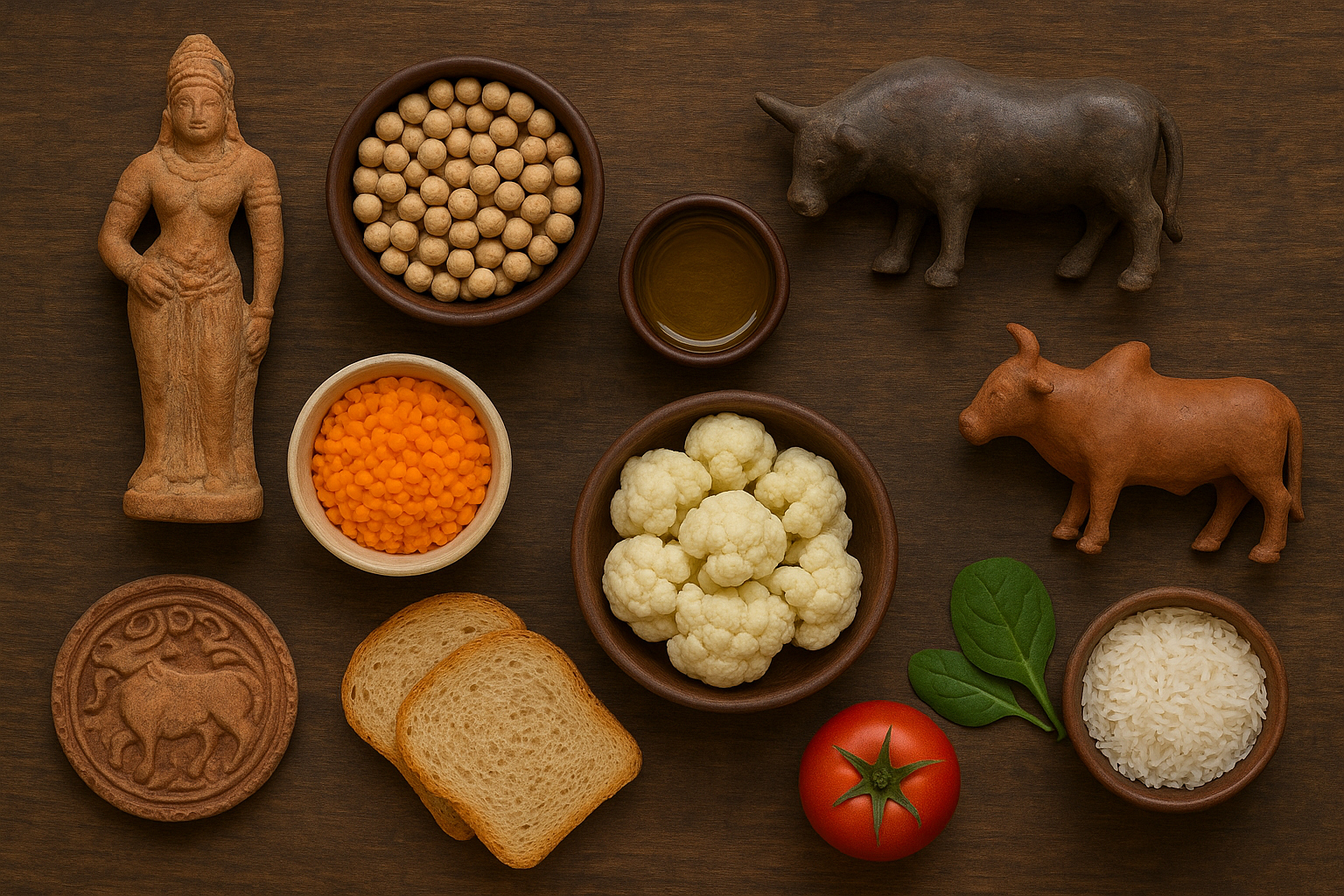The Indus Valley Civilization (2600–1900 BCE) has always intrigued historians, archaeologists, and the public for its advanced urban planning, trade networks, and enigmatic script. But one question that often sparks debate is: what did the Indus people eat? More specifically, did they consume cattle, or was their diet limited to other animals and dairy products? Recent scientific studies have shed new light on this issue, though the answers remain complex.
The Archaeological Evidence
1. Bones of Domestic Animals
Excavations across multiple Indus Valley sites — Harappa, Mohenjo-daro, Rakhigarhi, Farmana, Bhirrana, Lothal, and others — have consistently yielded animal bones. The most common among them are:
- Cattle/Zebu (Bos indicus)
- Water Buffalo (Bubalus bubalis)
- Sheep (Ovis aries)
- Goats (Capra hircus)
- Pigs (Sus scrofa, less common)
Cattle and buffalo bones together often make up 50–60% of domestic faunal remains, showing their central role in Indus economy and life.
2. Cut Marks on Bones
Some of these bones show clear evidence of butchery:
- Farmana (Haryana): Archaeologists reported a Bos indicus scapula with an oblique cut mark across the glenoid cavity, evidence of deliberate butchering (ResearchGate link).
- Bhirrana (Ghaggar region): Numerous Bos indicus bones with cut marks, charring, and chopping of the humerus were identified, consistent with meat extraction using copper/bronze tools (ResearchGate link).
This proves that zebu cattle were not just used for traction or dairy, but were also butchered and consumed at least in some contexts.
The Chemical Evidence
1. Lipid Residue Analysis
Recent studies have examined lipid residues preserved in pottery from Indus sites (e.g., Rakhigarhi, Masudpur, Farmana). These analyses detected:
- Ruminant animal fats (from cattle, buffalo, sheep, goats, or deer)
- Non-ruminant fats (possibly from pigs or plant-animal mixtures)
- Some dairy fats, though surprisingly less frequent than expected
While lipid chemistry can distinguish between ruminant vs. non-ruminant and sometimes between meat vs. dairy fats, it cannot differentiate between zebu and buffalo.
2. C4 Fodder Signatures
At Kotada Bhadli (Gujarat), compound-specific isotope analysis revealed dairy fats with C4 plant signatures (millets, sorghum). This suggests that Indus herders fed their ruminants on cultivated C4 crops and then processed their milk. Both cattle and buffalo can consume C4 fodder, so again, the species distinction remains unresolved.
Dairy and Meat in the Indus Diet
The combined evidence paints a picture of a mixed diet:
- Sheep and goat: regular sources of both meat and possibly milk
- Buffalo: valued for both rich milk and meat, especially in wetter zones
- Cattle/Zebu: multipurpose — traction, milk, hides, and in some cases, meat consumption, as shown by butchery marks on bones
- Dairy: present, but pottery residue studies show fewer dairy signals than expected, suggesting complex patterns of use
The Role of Religion or Culture
Some modern interpretations attempt to map later Hindu traditions — such as the sacredness of cows and buffalo sacrifice — backward onto the Indus people. However, the Indus Civilization predates the earliest Vedic texts by several centuries. While later Hinduism shows a sharp distinction between the sacred cow (milk only) and sacrificable buffalo, this cultural framework cannot be directly imposed on the Harappan archaeological record.
Conclusion
So, what do we really know? The hard evidence shows that:
- Zebu cattle bones with cut marks have been found at multiple Indus sites → proving they were butchered.
- Buffalo, sheep, and goats were also consumed.
- Dairy products from ruminants were processed, but less frequently detected in pottery residues than expected.
- Lipid and isotope analysis cannot distinguish zebu from buffalo, leaving some ambiguity.
Final Word
Keeping all the evidence in mind — bones, cut marks, lipid residues, isotopes — we can firmly say that the Indus people ate meat and dairy. But we cannot state with certainty that they consumed cow specifically, because the scientific methods available cannot distinguish between zebu cattle and water buffalo at the molecular level.
